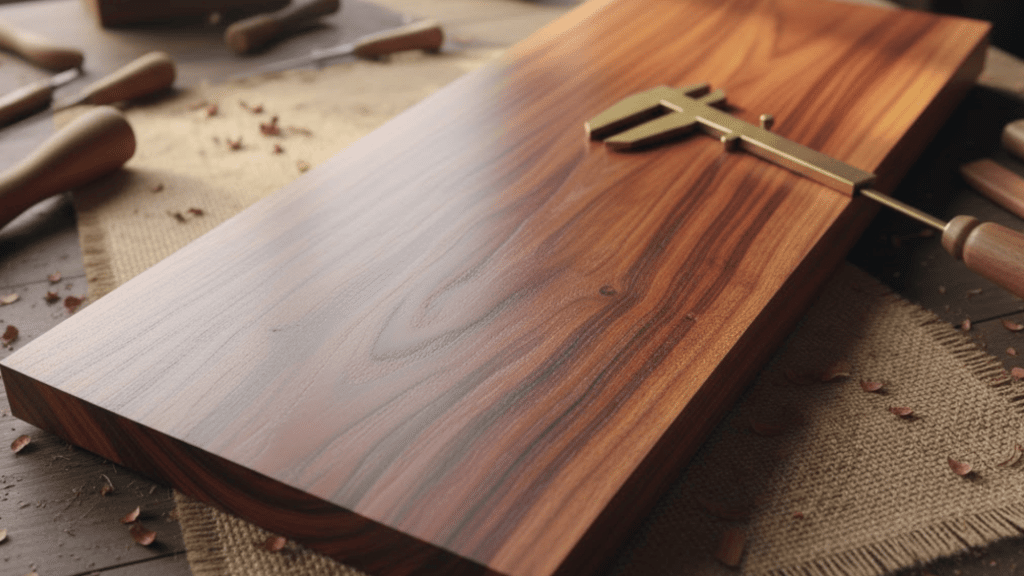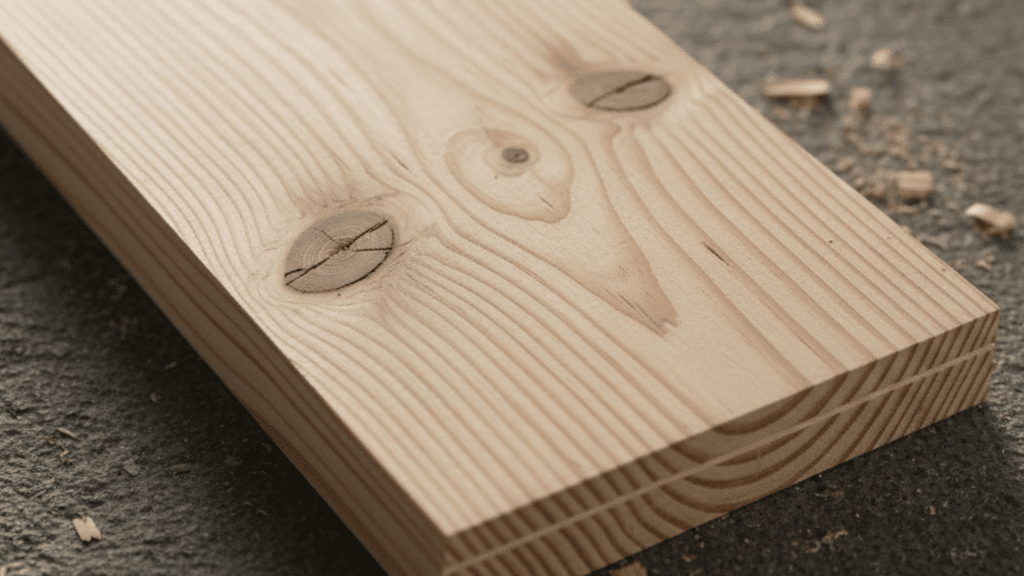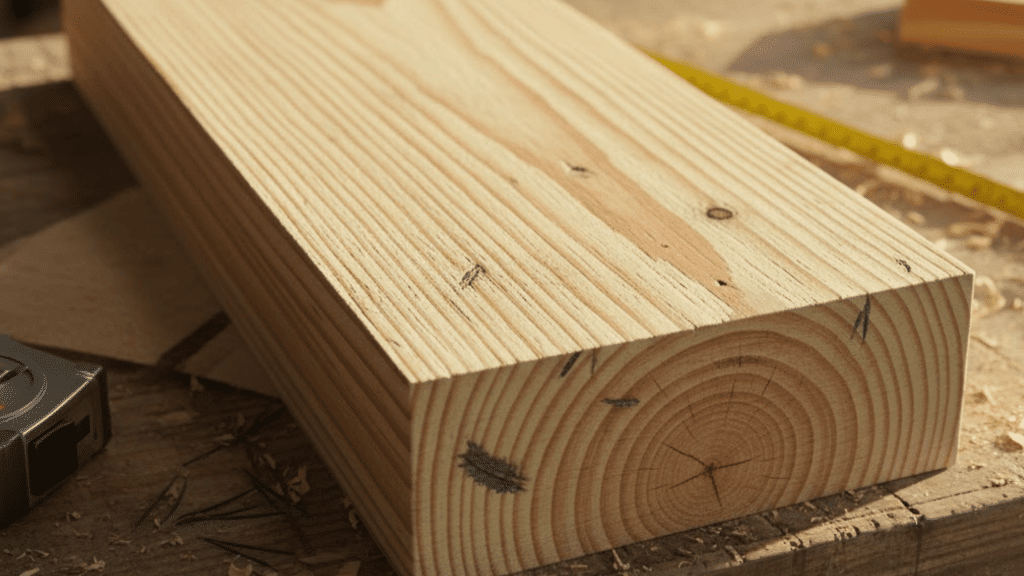Choosing the right types of wood furniture can completely change how your home looks and feels. Different woods offer unique colours, grain patterns, and strength levels that affect both appearance and durability.
Some woods work perfectly for heavy-use items like dining tables, while others suit decorative accent pieces better.
Understanding the characteristics of various wood types helps you make smart purchasing decisions that match your budget, style, and needs.
From sturdy oak to aromatic cedar, each wood brings something special to your living space. Knowing what makes each type unique ensures you invest in furniture that lasts for years.
Hardwood vs Softwood in Furniture: What’s the Difference?
When shopping for wood furniture, you’ll often hear the terms “hardwood” and “softwood.” These names can be confusing because they don’t always describe how hard the wood actually is.
Hardwoods come from deciduous trees that lose their leaves, like oak and maple. They grow slowly and are usually denser and more durable. Softwoods come from evergreen trees with needles, like pine and cedar.
They grow faster and are typically lighter and less expensive. For furniture, this difference matters a lot. Hardwoods resist scratches and dents better, making them ideal for tables and chairs that get heavy use.
Softwoods work well for bedroom furniture or decorative pieces where durability isn’t as critical.
How to Identify Wood Types by Grain, Colour & Texture?
Knowing how to identify different wood types helps you make smarter furniture choices. You can verify that what you’re buying matches the description and ensure you’re getting good value for your money.
- Grain Pattern: Oak has bold, wavy lines while maple shows tight, uniform patterns.
- Colour Hue: Cherry starts light pink and darkens to reddish-brown, while walnut is deep chocolate brown.
- Knots: These dark circular marks appear where branches grew. Pine has many knots, maple has few.
- Weight and Feel: Oak and mahogany feel heavy and dense, while pine is much lighter.
- Finish Behaviour: Some woods absorb stain evenly, while others turn blotchy when finished.
Learning these identifiers gives you confidence when shopping. You’ll spot quality pieces and avoid paying premium prices for lower-grade wood. You’ll also know exactly what to expect in terms of care and longevity.
Top Hardwood Types Used in Furniture
Hardwood furniture is valued for its strength and natural beauty. Each hardwood type has unique features suited for different furniture. Here are some durable and attractive hardwood choices.
1. Oak

Oak is one of the most popular hardwoods for furniture making. It features distinctive grain patterns with visible rays and swirls that give each piece character. The wood ranges from light tan to medium brown in colour.
Oak is extremely durable and resistant to everyday wear, scratches, and moisture damage. It holds up well even with heavy daily use, making it a practical investment.
Best For: Dining tables, wardrobes, bookshelves, and flooring.
2. Walnut

Walnut stands out with its rich chocolate brown colour and straight, smooth grain. The wood has natural colour variations that add depth and visual interest to furniture pieces.
It’s strong and stable, though slightly softer than oak. Walnut’s luxurious appearance makes it a favourite for statement pieces. The dark colouring pairs beautifully with both modern and traditional home styles.
Best For: Accent furniture, headboards, desks, and high-end pieces.
3. Cherry

Cherry wood starts as a light pinkish-tan and gradually deepens to a warm reddish-brown over time. This natural aging process adds character and richness to the furniture.
The wood has a fine, uniform grain with a smooth texture. Cherry is moderately hard and works well for detailed craftsmanship. Its warm tones create a welcoming atmosphere in any room.
Best For: Classic cabinets, bedroom furniture, and heirloom pieces.
4. Teak

Teak is known for its exceptional durability and natural oil content that protects it from moisture and insects. The wood has a golden-brown colour with straight grain patterns.
Its natural oils make it highly resistant to rot and warping, even in humid conditions. Teak requires minimal maintenance and can last for generations. The wood develops a beautiful silvery patina over time if left untreated.
Best For: Outdoor furniture, bathroom vanities, garden benches, and patio sets.
5. Mahogany

Mahogany offers an attractive reddish-brown colour that deepens with age. The wood has a straight, fine grain that’s easy to work with and holds intricate details well. It’s moderately hard and very stable, resisting shrinking and swelling.
Mahogany takes stain and polish beautifully, creating a smooth, glossy finish. Its luxurious appearance has made it a favourite for high-quality furniture for centuries.
Best For: Formal dining sets, office furniture, decorative carvings, and antique reproductions.
6. Indian Rosewood

Indian Rosewood features rich purple-brown tones with distinctive darker streaks running through it. The wood is extremely dense and heavy, making it incredibly durable and long-lasting.
It has a pleasant natural fragrance and contains oils that protect against insects. The striking colour contrast and unique grain patterns make each piece one-of-a-kind. This wood is considered premium quality for furniture.
Best For: Traditional carved furniture, beds, dining tables, and decorative showpieces.
Popular Softwood Types for Furniture
Softwood furniture offers affordability and versatility for many home applications. While softer than hardwoods, these woods still provide good functionality when used appropriately.
7. Pine

Pine is one of the most budget-friendly wood options available for furniture. It has a light, creamy colour with visible knots that give it a rustic, casual look. The soft texture makes it easy to cut, shape, and finish, which keeps manufacturing costs low.
Pine accepts paint exceptionally well, making it perfect for colourful furniture projects. However, its softness means it dents and scratches more easily than hardwoods.
Best For: Kids’ furniture, painted finishes, bedroom sets, and farmhouse-style pieces.
8. Cedar

Cedar has a distinctive, pleasant aroma that naturally repels moths and insects. The wood ranges from light amber to reddish-brown with a straight grain. Its oils resist moisture, decay, and insects.
Cedar is lightweight yet surprisingly durable for a softwood. The aromatic properties make it especially valuable for storage furniture and outdoor applications.
Best For: Closets, wardrobes, chests, outdoor furniture, and storage boxes.
9. Fir

Fir is a practical softwood with a straight, subtle grain pattern that’s less decorative than other woods. It has a pale yellowish-tan colour with minimal natural markings. The wood is relatively strong for a softwood and holds nails and screws well.
Fir is commonly used in construction-grade furniture where function matters more than appearance. It’s a cost-effective choice for pieces to be painted or covered.
Best For: Utility furniture, painted cabinets, shelving units, and framing.
10. Spruce

Spruce is a pale, almost white wood with a subtle, uniform grain pattern. It’s one of the lightest softwoods available, making furniture easy to move and rearrange. The wood has minimal resin content and a smooth texture that accepts finishes well.
Spruce is moderately strong for its weight but can be prone to splitting. Its clean appearance and affordability make it popular for simple, functional furniture designs.
Best For: Lightweight shelving, craft furniture, children’s pieces, and budget storage solutions.
How to Choose the Right Wood for Your Furniture?
Choosing the right wood depends on how the furniture will be used, your style, and your budget. Hardwoods like oak or walnut are strong and great for items like beds or tables that get used a lot.
Softwoods like pine or cedar are lighter and work well for shelves or decorative pieces. If you like furniture with visible grain, oak or Indian rosewood is a good pick.
For a smoother look, try walnut or maple. Some woods are better for outdoor use, like teak, because they handle moisture well. Darker woods can hide scratches better, while lighter ones may show marks more easily.
Think about how much care you want to give the piece and how much you’re willing to spend.
Summing It Up
Understanding different types of wood furniture helps you select pieces that fit your lifestyle and home.
Each wood type has distinct advantages, from the durability of hardwoods like oak and walnut to the affordability of softwoods like pine and cedar.
The right choice depends on where you’ll use the furniture, your budget, and the look you want to achieve.
Now that you know the key differences, you can shop with confidence and find pieces that will serve you well for years to come. What’s your favourite wood type for furniture? Share your thoughts in the comments below!


